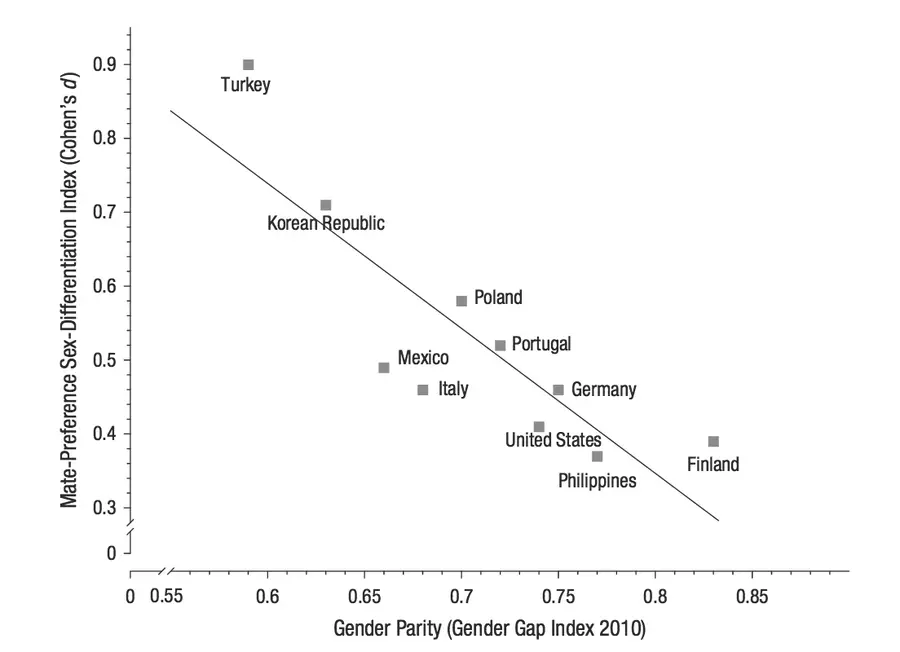A common view about mate preferences is that they are evolutionarily “hardwired” and thus largely impervious to sociocultural influences. However, our research suggests that mating preferences of women and men have responded with unsuspected speed to societal changes.
A particularly relevant societal change is progress in gender equality. Cross-national comparisons show that partner preferences of women and men converge with progressing gender equality (Figure 1). This convergence can also be observed within a society over time (Figure 2).
These results are plausible from a social-psychological and an evolutionary perspective. Indeed, new findings suggest that the environment of our ancestors was less stable than has been thought for a long time. Thus, adaptive advantages were conferred to those who could adapt easily. Flexibility is crucial for successful mating and reproduction, because the conditions that make a person attractive change across historical periods and cultures.



